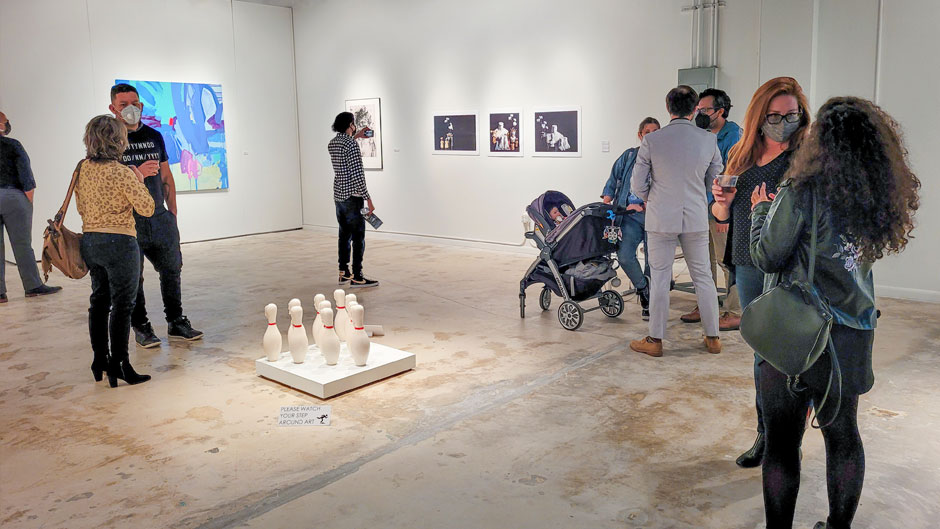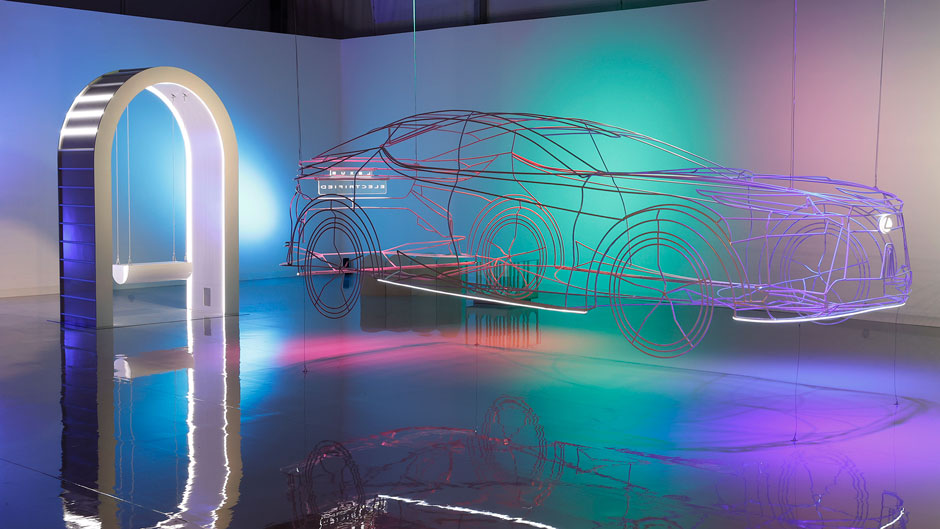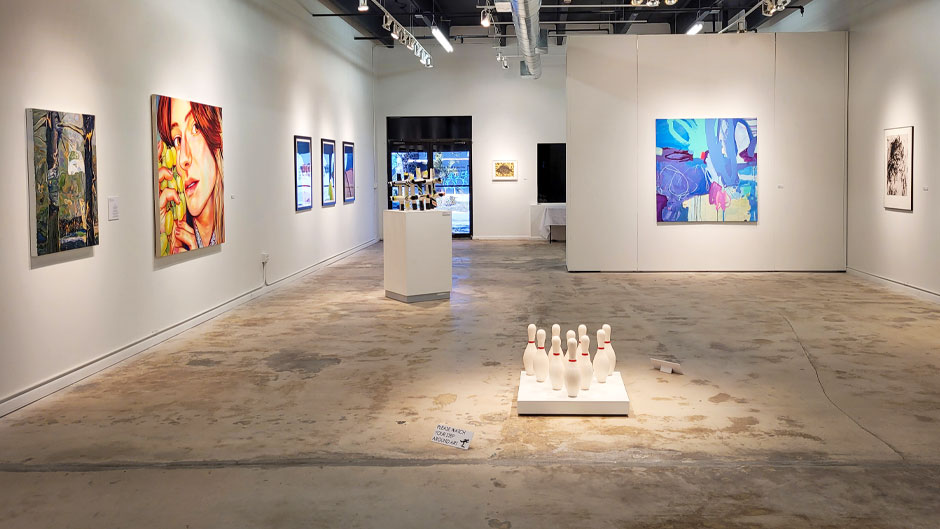Miami Art Week was back in force this year.
At least that’s the energy and sales that some of the University of Miami’s top art experts noticed.
Throughout the past week, thousands of art collectors, spectators, and gallery owners descended upon the Magic City for Art Basel and a multitude of art fairs that coincide with the Miami Beach event. Those who attended the fairs said they felt reinvigorated by the art and the attendance after last year’s in-person festival was canceled. And organizers from Art Basel and other events said that sales on contemporary art pieces from the United States, the Caribbean, and the Americas were brisk, with many pieces garnering more than a million dollars.
“The sales from Miami Art Week are an indicator that the art market is extremely vigorous right now,” said Jill Deupi, director and curator of the University’s Lowe Art Museum. “It’s booming.”
Although Miami has always had an art industry, experts agree that Art Basel’s decision in 2002 to make its U.S. home in this city helped accelerate an expansion of offerings.
“There’s no question that Art Basel was a critical catalyst to everything that has flowed therefrom,” Deupi said. “Many of the private collections and museums would have opened anyway, but the Basel bump is real because it put Miami front and center as an art town to be reckoned with.”
Each year, more ancillary art fairs are added, offering more outlets for galleries and art dealers to sell their pieces, as well as more variety for collectors. When Art Basel Miami began this year, so did at least 13 other art exhibitions dotting the city, along with at least two fashion shows—from Louis Vuitton and Chanel—and a host of other gallery openings. Art student Alejandra Moros displayed her work at NADA Art Fair, while graduate business student Mariana Cordoba exhibited at PINTA Miami. Alumna and ceramic artist Lauren Shapiro also debuted an installation of a lost coral reef at the Royal Palm South Beach Hotel.
“In recent years, Miami Art Week has grown so much that these fairs or events are no longer focused on just one event (Art Basel Miami Beach); rather, the city is focused on many different fairs that include not just visual art, but performance art, and fashion too,” said Nathan Timpano, associate professor and chair of the Department of Art and Art History.
Besides the economic boon of tourists visiting Miami, art week also helps locals and visitors appreciate the city’s year-round venues for modern art, including the Pérez Art Museum Miami, the Museum of Contemporary Art North Miami, the Little Haiti Cultural Center, and the city’s newest art museum, the Institute for Contemporary Art, Miami. And philanthropists who attend art week may help sustain artist-in-residence programs following their visit to Miami, making it possible for emerging artists to thrive locally, Timpano said.
In addition, the University’s commitment to having a space in the city’s art district, for students to display their work, is extremely beneficial to anyone at the U who wants to pursue an art career, said Milly Cardoso, director and curator of the Wynwood Gallery. During previous art weeks, two students garnered private gallery representation after an art dealer walked in and noticed their work. This year, one student sold a piece displayed in the gallery.
 “We have visitors from all over the country and the world, and many of them visit the art district. So, it’s an exposure to a whole different audience for our students,” she said. “Last week was really great, and it’s amazing for our students to have this space in Wynwood because it's an opportunity for them to connect with gallery owners from New York, Los Angeles, and beyond.”
“We have visitors from all over the country and the world, and many of them visit the art district. So, it’s an exposure to a whole different audience for our students,” she said. “Last week was really great, and it’s amazing for our students to have this space in Wynwood because it's an opportunity for them to connect with gallery owners from New York, Los Angeles, and beyond.”
So, what were some of the highlights of art week?
Deupi, Timpano, and Cardoso all appreciated the smaller Design Miami/ exhibit, carefully curated and within walking distance of the larger Art Basel event. They said that architecture assistant professor Germane Barnes’ sculpture of an electrified Lexuswas a treat to see in person, and Deupi also enjoyed a sculpture of a sink that was a collaboration between Miami-born artist Daniel Arsham and Kohler, the plumbing company.

In addition, Timpano and Deupi agreed that the larger diversity of booths and gallery owners at Art Basel this year was refreshing. That broader perspective was also reflected in the art, which showcased works that dealt with sexual identity, as well as race, class, and background. There were even two Native American artists’ work that Deupi was glad to see were included—Kay WalkingStick, a Cherokee painter, and Jeffrey Gibson, a painter, textile artist, and sculptor who is a descendant of the Choctaw and Cherokee tribes.
“Those artists who have been left in the shadows for so long, are now receiving their due praise in a more targeted way than before the pandemic or the murder of George Floyd,” Deupi said.
Timpano added that there was a minor focus on the Black body sprinkled throughout the five exhibitions he visited last week.
“We are seeing that the Black Lives Matter movement is still very much finding a voice in the contemporary art scene,” Timpano said. “There was also a specific focus on what it means to be a non-white artist . . . and in Miami that can also mean the Black Caribbean body. So, this particular dialogue and discourse was interesting to tease out in this year’s fairs.”
Deupi pointed out that there was a great deal of figurative art, which often showcases the human body.
“I think there was a connection between the pandemic lockdowns and painting the human figure—either alone or interacting with others, as opposed to abstract art,” she said.
There was also a major focus on NFTs, or non-fungible tokens, a new type of cryptocurrency used to purchase digital artwork. According to Deupi, the Lowe is exploring acquiring some digital art, which was on display at many Art Basel booths.
“Those individuals who are tech-savvy and understand the future of this technology were attracted to the newness that surrounds e-media, art, trading and commerce,” Timpano added.
Regardless of how Miami’s art world grows, art experts believe the future is bright for Miami’s art industry.
“Miami has always been incredibly diverse, but internationally, we are now being taken more seriously. So, the idea of someone building a collection here, rather than flying to New York, is much more readily accepted,” Deupi said.
Timpano agreed. “A lot of cynical people will say that Miami Art Week only happens for seven days and then Miami is forgotten, and I don’t think that’s the case,” he said. “If anything, art week is an opportunity for local artists’ to present their work and then attract a greater following the other 51 weeks of the year.”

